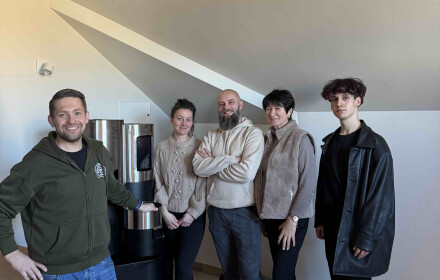Conduction, Convection and Radiation in the Coffee Roasting Process
Coffee roasting is a true art, the mastery of which opens the door to a fascinating world of flavours and aromas. While it may seem like a complex and incomprehensible process to the layman, in practice it all comes down to precise control and an understanding of how heat interacts with coffee beans. When roasting coffee, heat transfer is key and occurs in three main ways: conduction, convection and radiation. Each of these mechanisms plays an important role in transforming raw coffee beans into a ready-to-brew product.
Conduction
Conduction is the first of the stages in which heat is transferred through direct contact between surfaces - whether between the coffee beans or between the beans and the surface of the roasting drum. It strives for thermal equilibrium, moving from a warmer object to a cooler one. This is the basic mechanism that starts the roasting process, opening the beans to further stages of transformation.
Convection
Convection is the process of heat transfer through air movement. In this case, the speed and temperature of the rotating air in the drum are crucial. By controlling these parameters, we are able to influence the uniformity of the roasting of the beans, which in turn will translate into the flavour and aroma profile of the final product.
Radiation
Radiation, although long marginalised, is an important part of the coffee roasting process. Heat radiation has the ability to penetrate the beans, providing energy to the beans at an early stage of roasting. This enables deeper and more complex transformations in the structure of the coffee bean.
Innovations in Roasting: Stronghold roasters
Regardless of the type of roaster used, all three of the aforementioned methods of heat conduction occur, albeit in different proportions. However, the innovation of Stronghold cookers lies in the ability to control all three. Thanks to an efficient heater, hot air flows into the drum and circulates around the beans, and the use of halogen lamps allows heat to radiate evenly over all the beans. Controlling the stirring speed of the coffee not only allows us to regulate the contact time of the beans with each other, but also the amount of hot air surrounding the beans in the oven. In this way, we have the ability to fine-tune the roasting profile to achieve the flavour and aroma we deem ideal for our coffee.
Coffee roasting is a process full of complexity, but also passion and the search for perfection. At our roastery, thanks to modern technology and a deep understanding of the process, we are able to extract the best from each bean. Ultimately, it is the care and attention put into every step of the roasting process that makes the coffee from our roastery so special and unique.
 CMS
CMS



